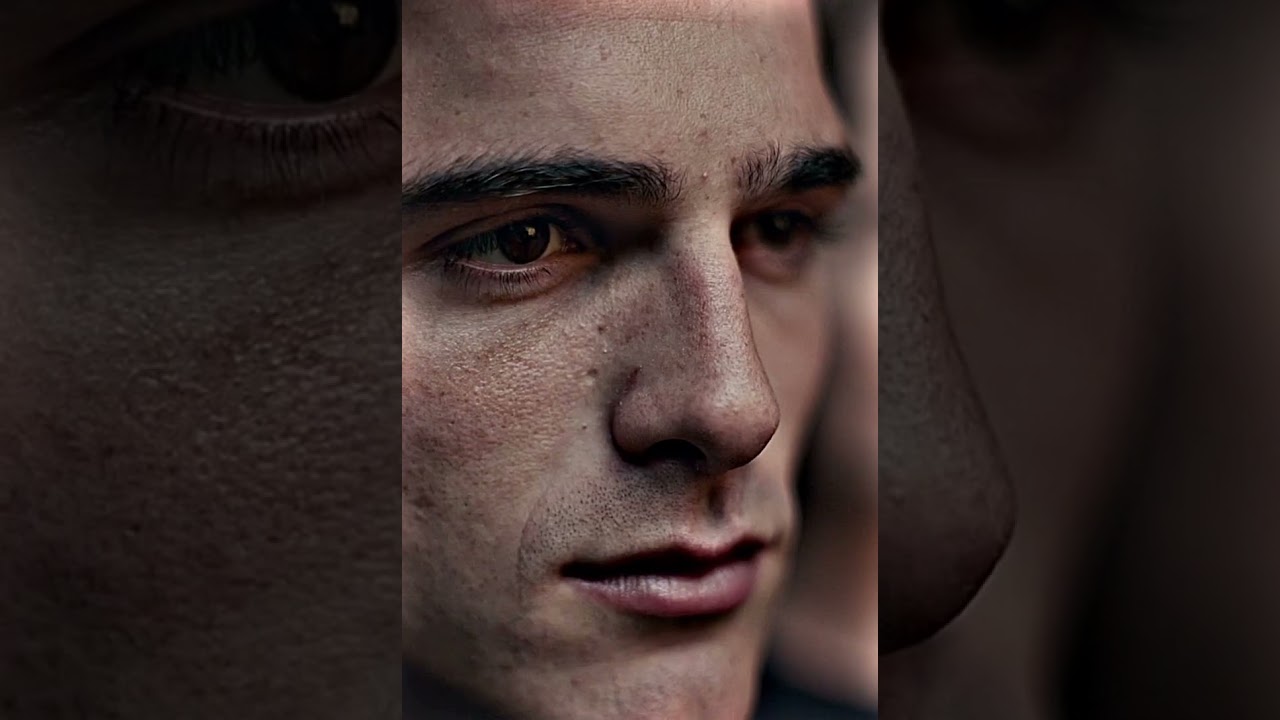
1. Understanding Nate Jacobs: A Character Study
Nate Jacobs, a central figure from the critically acclaimed series Euphoria, truly embodies the struggles of modern adolescence. His tumultuous upbringing sheds light on the familial pressures and societal expectations that many teens grapple with today. Nate’s journey is a raw exploration of identity, power struggles, and mental health—issues that resonate deeply within today’s youth. The show’s gripping narrative and complex characterization have sparked crucial conversations about the realities teenagers face, making Nate a pivotal representation of contemporary teen experiences.
Growing up in an environment rife with chaos, Nate finds himself spiraling into violent and manipulative behaviors. His character is not just a fictional creation; he’s a mirror reflecting the emotional and psychological battles many young men endure in silence. The profound discussions ignited by Nate’s character highlight the urgent need to address these topics in a more open, understanding way within our communities.
Moreover, Nate Jacobs’ struggles don’t just exist in isolation; they tap into wider social conversations, particularly regarding the impact on mental health. Audiences have been captivated, not only by Nate’s storyline but also by how it encapsulates a generation’s fight for emotional validation and acceptance. Through Nate, Euphoria effectively positions itself at the forefront of discussing teenage challenges, showing us the heartbreaking realities that lurk beneath the surface of youth culture.

2. The Dichotomy of Nate Jacobs and Nick Wilde: A Comparative Analysis
While it’s important to examine Nate Jacobs’ dark struggles, contrasting him with a character like Nick Wilde from Zootopia offers a fascinating perspective on adolescence. Both characters emerge from their unique backgrounds, creating engaging narratives that spotlight their personal journeys through adversity.
1. Background and Motivation
Nate’s chaotic family life has fueled a need for control, often expressing itself through aggression and manipulation. His challenges are starkly different from Nick’s; as a former con artist, Nick embodies resilience and determination. He’s motivated by the desire to forge connections and prove himself in a world that often doubts him. This contrast highlights how different backgrounds shape one’s path and coping mechanisms.
2. Societal Influence
Nate represents a harsh reality faced by many young men today, showcasing how toxic masculinity can warp perceptions of self-worth. His identity is deeply intertwined with the expectations placed on him, leading to destructive behaviors. On the flip side, Nick’s character illustrates the power of challenging societal stereotypes. He embraces growth and understanding, providing a hopeful narrative that counters Nate’s darker path.
3. Relationships and Trust
Nate’s inability to form meaningful connections reflects an ongoing struggle with emotional trauma. He resorts to manipulation to feel powerful, often sacrificing genuine relationships in the process. Nick’s story, however, emphasizes the importance of trust and camaraderie, particularly in his dynamic with Judy Hopps. This stark contrast encapsulates how trust can lead to personal growth, while lack of it can spiral into isolation and cynicism.

3. The Psychological Implications of Nate Jacobs’ Behavior
Nate’s journey serves as a profound examination of the psychological fallout from trauma and toxic environments. Various studies link unstable family dynamic experiences to increased aggression and difficulty forming healthy relationships. For instance, research shows that adolescents like Nate often exhibit heightened emotional responses shaped by their upbringing, leading to destructive choices in their pursuit of power and validation.
The character of Nate Jacobs invites viewers to reflect on the real-life implications of his behavior. His journey not only serves as a cautionary tale but also emphasizes the importance of acknowledging the nuanced emotional experiences of young men today. His story demonstrates that fictional portrayals can mirror reality, opening doors to discussions that prioritize understanding and support for mental health challenges that many face.
This exploration sheds light on the critical role of awareness in addressing issues surrounding adolescent mental health. By analyzing Nate’s narrative, we can better understand how trauma manifests in various forms and influence significant behavioral trends in youths today.

4. Navigating the Cultural Landscape: Nate Jacobs in the Modern Teen Experience
In an era where social media plays a massive role in shaping identity, Nate’s character deeply resonates with ongoing conversations around mental health and societal pressures. His portrayal reflects the intense struggles that come with modern adolescence, navigating an online world that often fosters insecurity and comparison.
The Role of Social Media
Platforms like Instagram amplify feelings of inadequacy, often feeding into the very anxieties that Nate displays. The need for control and validation drives many teens to engage in unhealthy competition, mirroring Nate’s quest for power amid emotional turmoil. This aspect of his character creates invaluable conversation around the impact of digital culture on today’s youth.
Substance Use as a Coping Mechanism
Nate’s struggles with substance use showcase a common coping mechanism among flooded teens facing pressures and mental health challenges. Data confirms rising rates of anxiety and depression correlate with modern stressors, underscoring the need for increased support and understanding. By exploring Nate’s experiences, we can identify parallels with the everyday lives of young people grappling with similar issues.
Nate Jacobs emerges as a character steeped in the cultural milieu of adolescent life today—illustrating immense hardships while serving as a reminder that these conversations matter.

5. Implications for Understanding Teenage Mental Health
Through Nate Jacobs, we can foster a deeper understanding of teenage mental health struggles. Recognizing signs of distress is crucial for parents, educators, and peers alike. Developing supportive environments where open dialogue about mental health is encouraged can pave the way for healing and resilience.
Key strategies to cultivate supportive communities include:
Acknowledging and addressing the narrative of Nate Jacobs is fundamental in nurturing a culture that prioritizes mental well-being. With these approaches, we can foster healthier generations and break the cycles of pain and misunderstanding.
Innovative Wrap-Up: Embracing Complexity in Adolescent Narratives
Nate Jacobs serves as a poignant reminder of the multi-faceted nature of teenage angst—a representation of the struggles that many face behind closed doors. His story juxtaposed against characters like Nick Wilde reveals the critical importance of empathy and understanding in addressing youth complexities today. As we continue to trek through adolescence’s chaotic landscape, fostering awareness and support networks for troubled teens will be vital.
Through discussions surrounding Nate, we can not only reflect on compelling narratives but also drive real-life changes in the lives of countless teens. By doing so, we may help others to walk their paths toward resilience and healing, embodying the lessons learned through this intricate exploration of Nate Jacobs’ character.
In an age where mental health conversations are more critical than ever, let’s choose to dive deeper into the narratives that impact our youth. By embracing these complexities, we can foster a compassionate environment capable of guiding troubled teens toward a brighter future.
Nate Jacobs: The Complex Journey of a Troubled Teen
A Closer Look at Nate Jacobs
Nate Jacobs has become a zeitgeist figure for troubled teens, with his profound character arc resonating with viewers everywhere. One interesting tidbit is that Nate’s journey mirrors the ups and downs experienced by actual teens today. For example, just like the fighters in the Ksi fight, Nate grapples with emotional battles, revealing an uncanny connection between modern conflicts and the dramatized versions we see onscreen. It’s a reflection of how many teens face their demons, making the character all the more relatable.
Inspirations Behind the Character
There’s a lot that goes into shaping a character like Nate Jacobs. Did you know that the creators took hints from various pop culture influences? The complex portrayals in titles like Lilith From Darkstalkers demonstrate how rich, multifaceted characters can make a mark on audiences, similar to how Nate stirred conversations around mental health. His character is more than just a “bad boy” trope; he’s a canvas for discussions about identity and youth turmoil.
More Fun Facts
Beyond the emotional arcs, the show also brings in some surprising elements that keep fans on their toes. For instance, Nate’s backdrop plays a significant role in shaping his narrative—akin to some of the wild stories that come from places like Virginia Beach. Additionally, fans often discuss how Nate’s story intertwines with themes explored in movies like Penelope, showcasing the trials of self-acceptance. Plus, just like the tribulations seen in Danny D ’ s storylines, Nate embodies a restless energy that many find compelling.
As fans eagerly anticipate more developments, including the buzz around the John Wick 5 release date that has everyone talking, Nate Jacobs stands out as a beacon of youth in turmoil, proving that even in struggle, there’s a fascinating story to unfold.

















